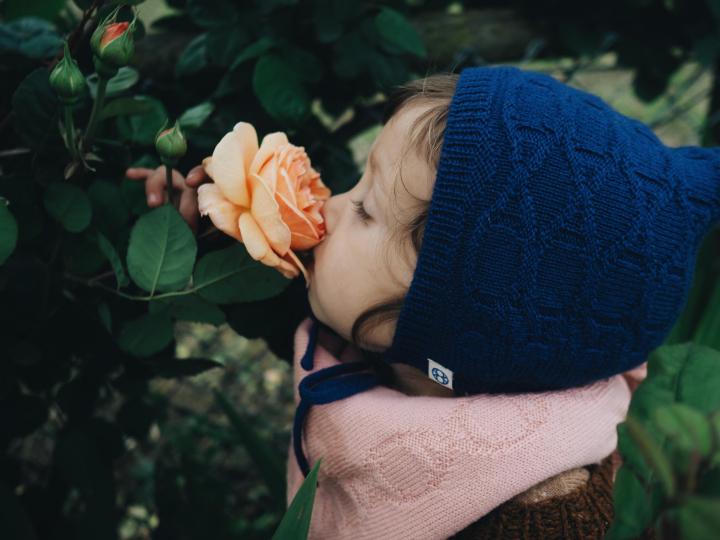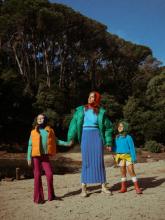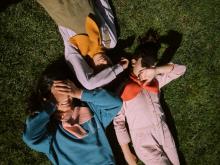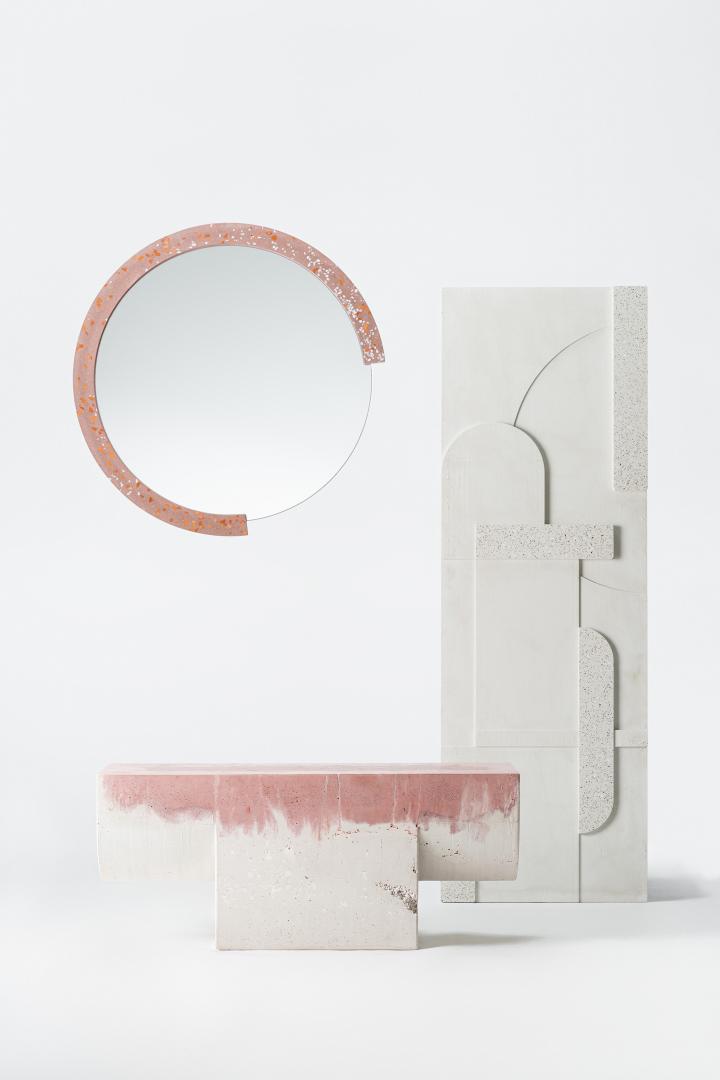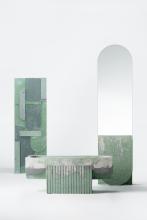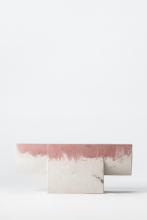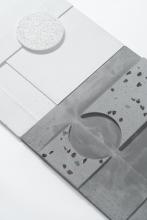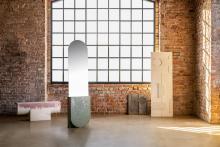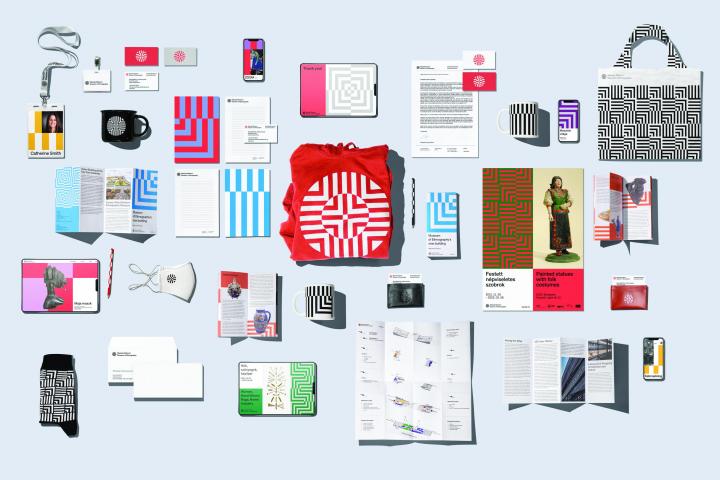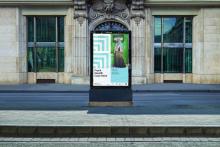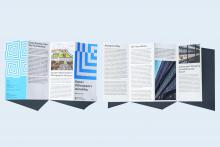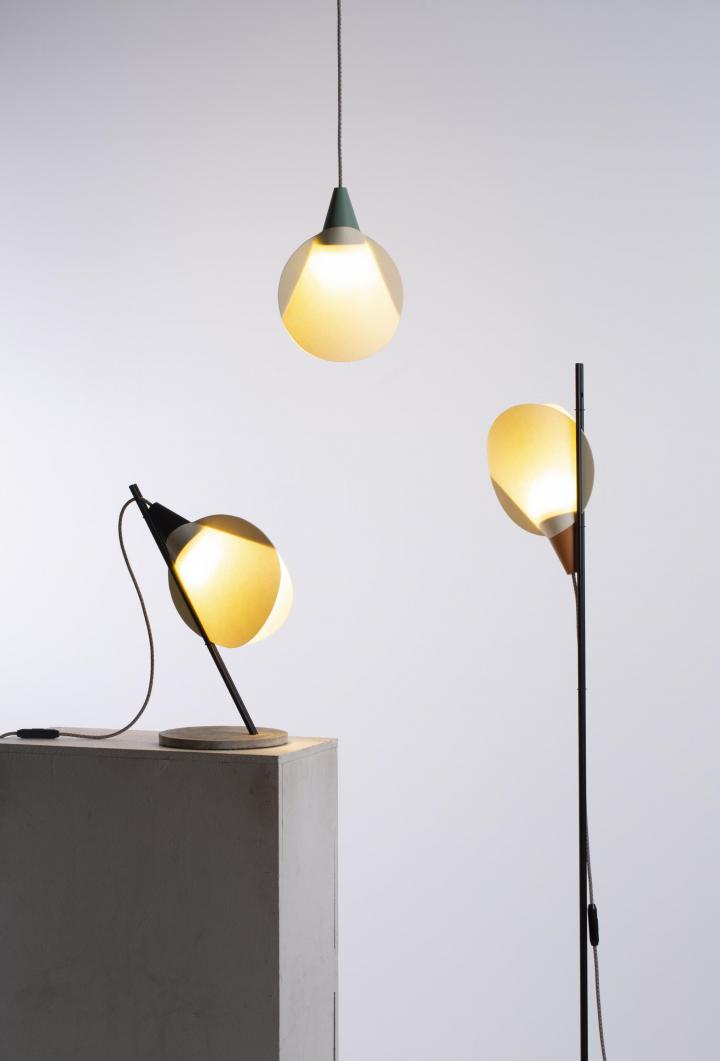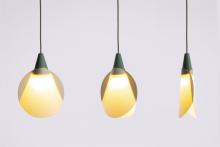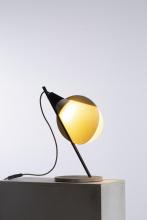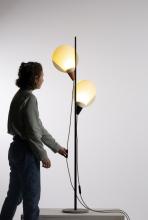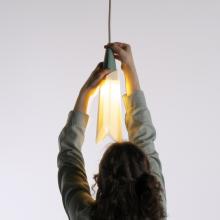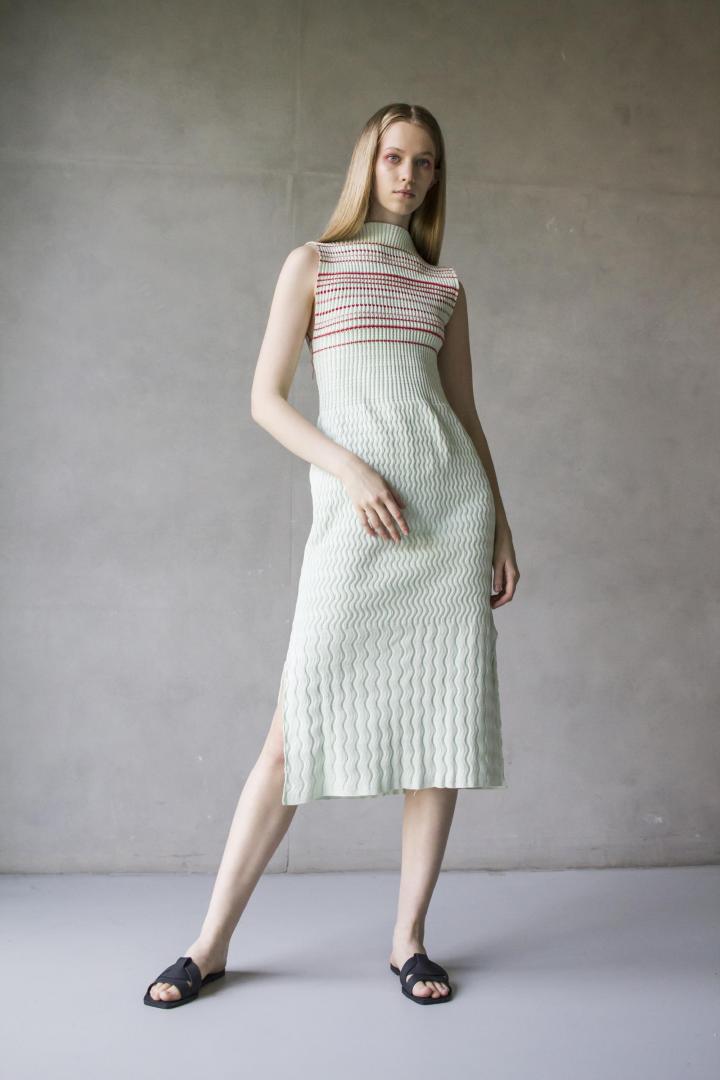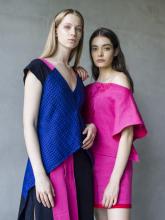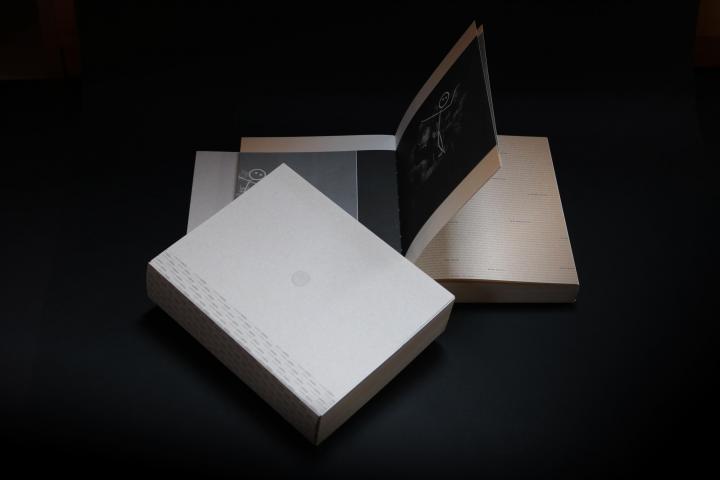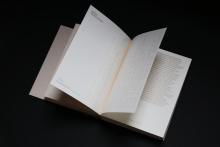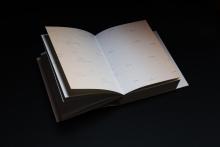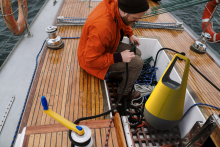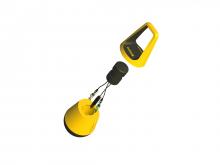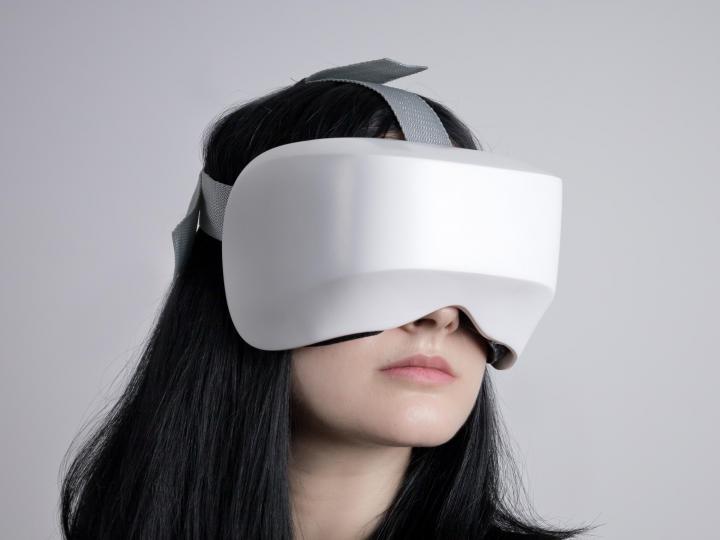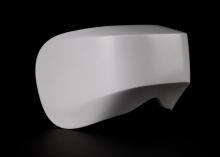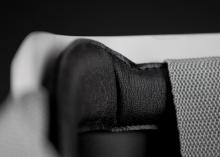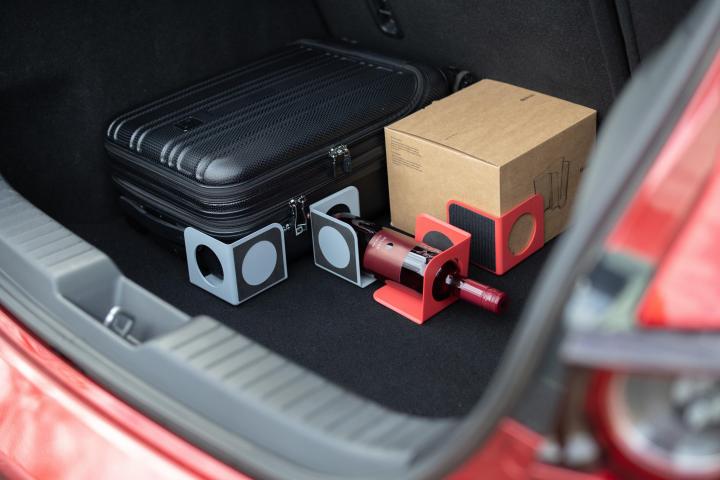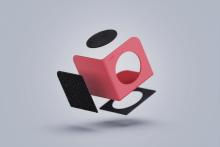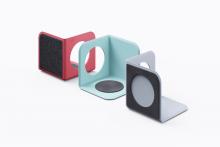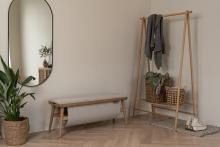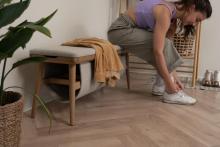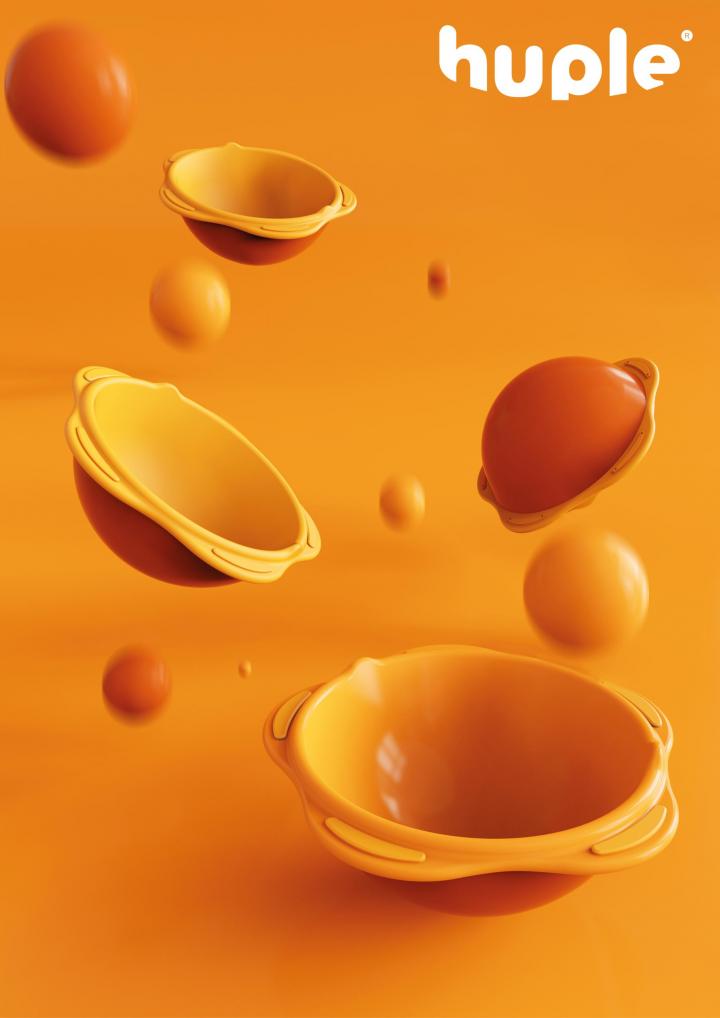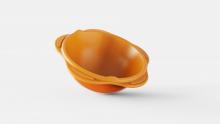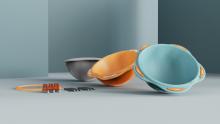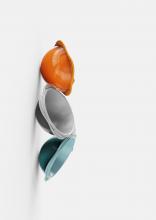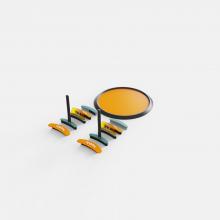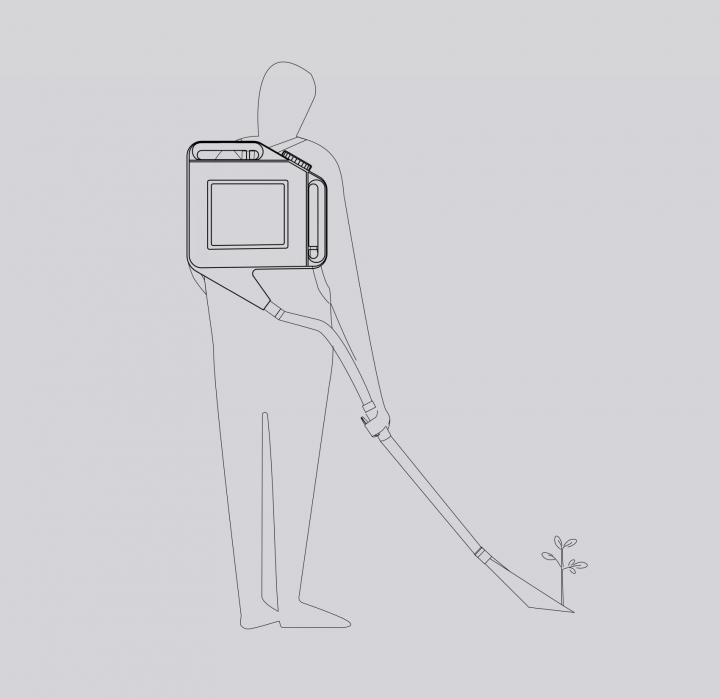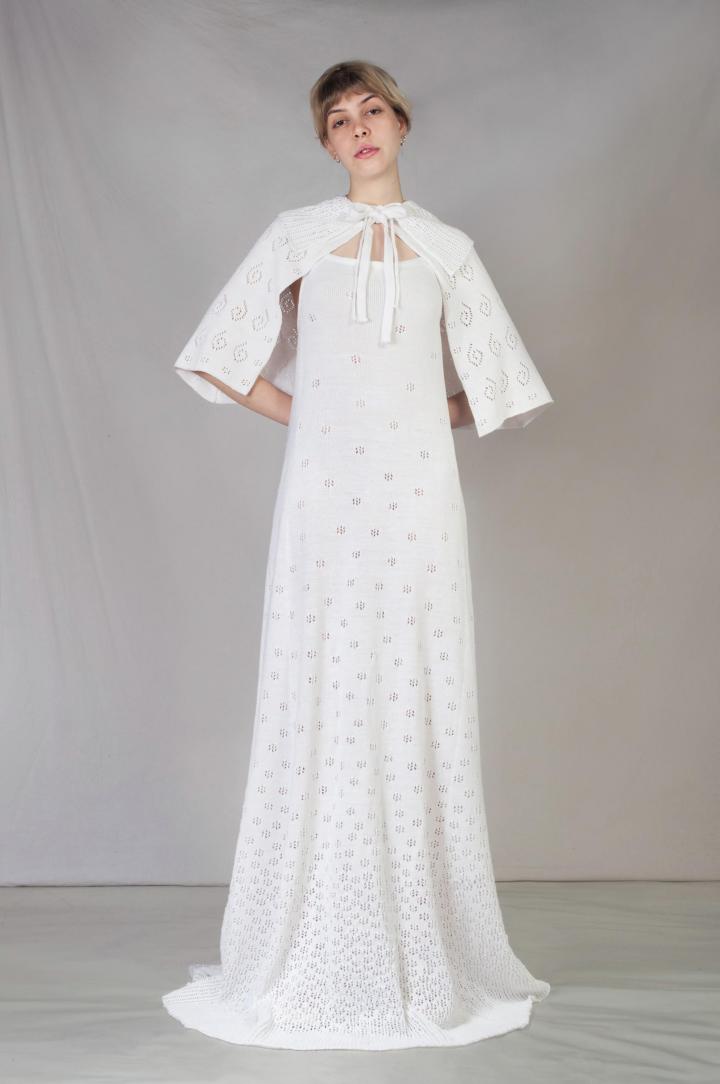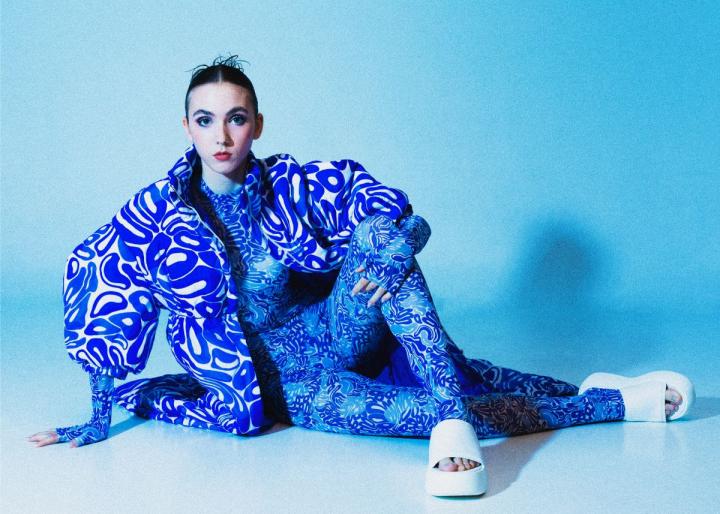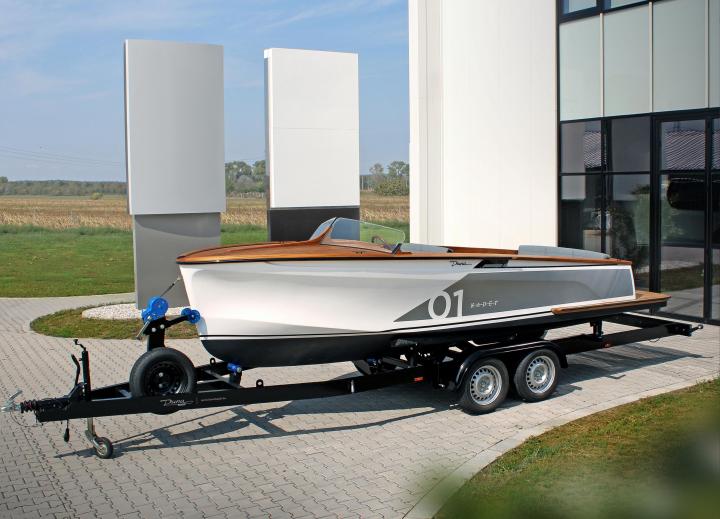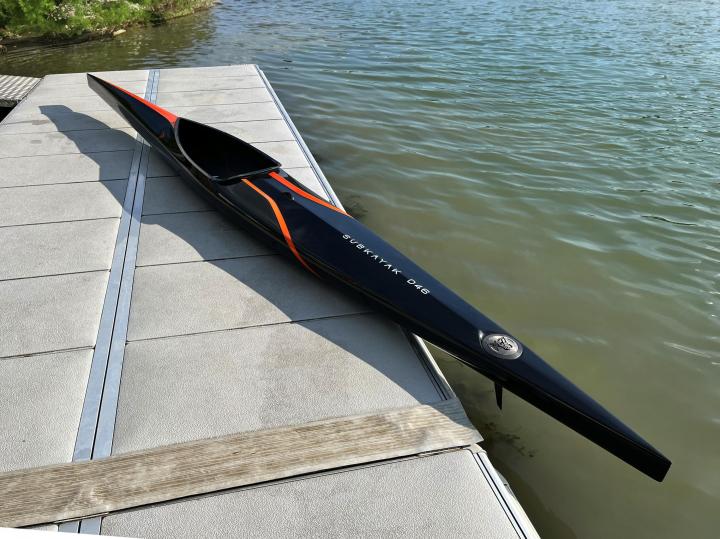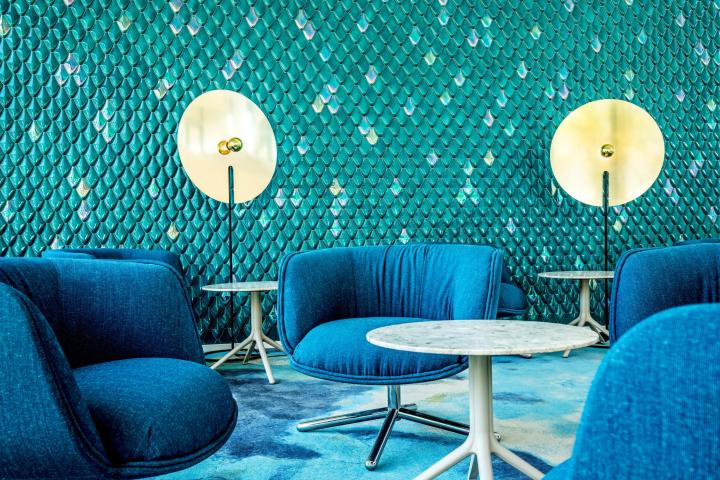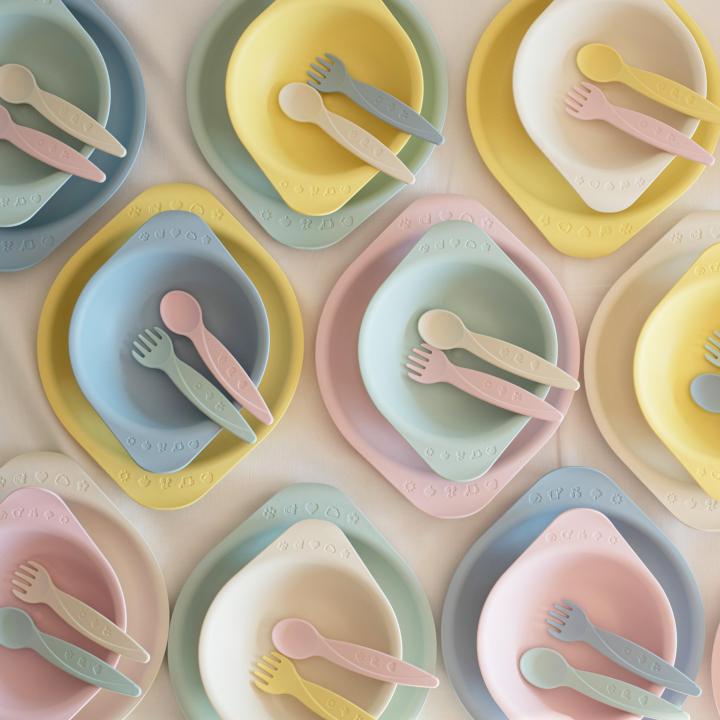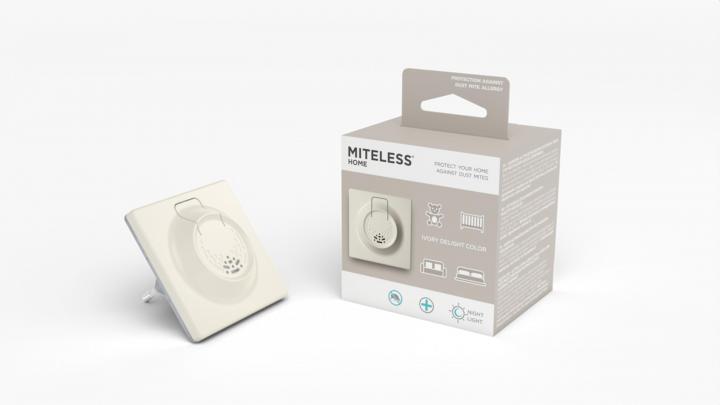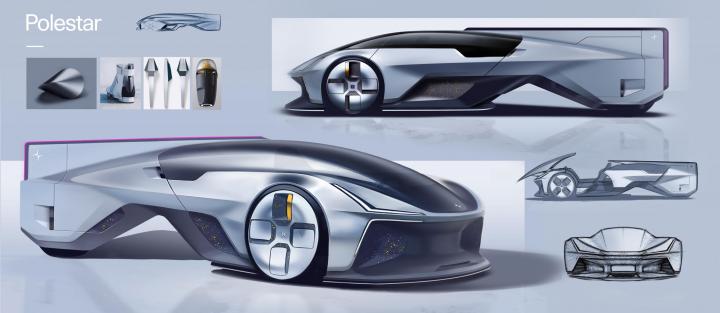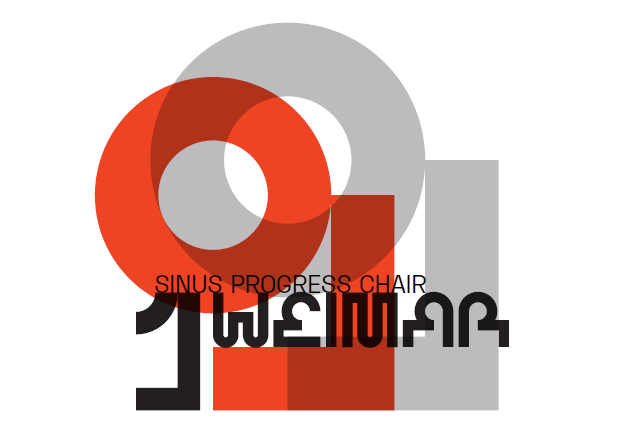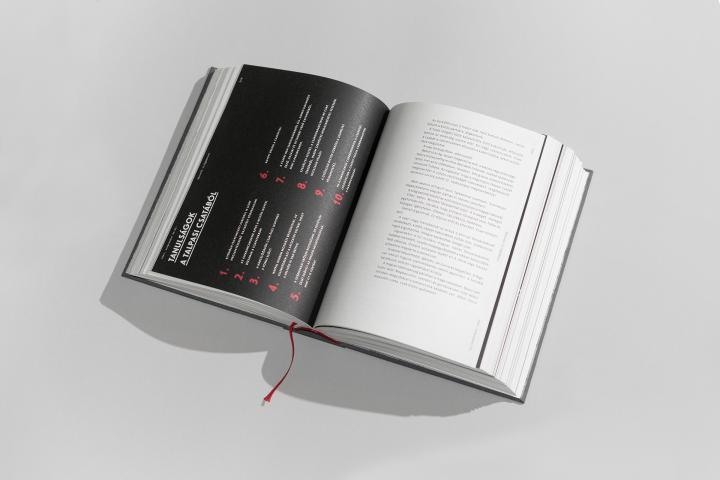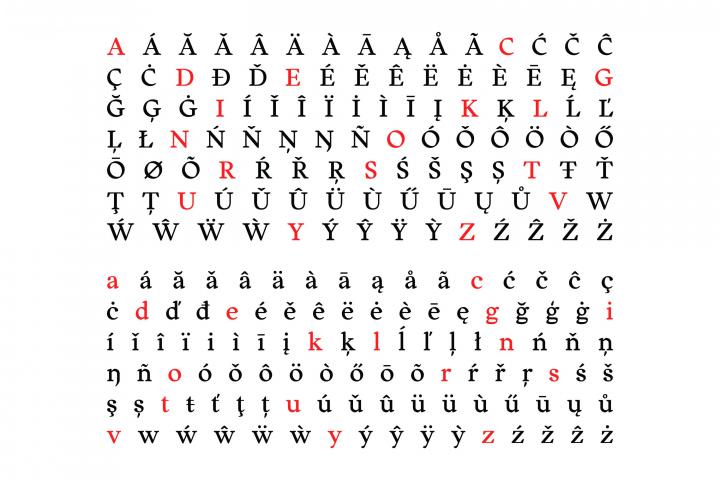Hungarian Design Award Winners 2023
Concept category
BOO STUDIO
BOO Studio focuses on sustainability regarding the environment and economy to an equal degree: the raw material used for their garments, Merino wool, is durable and degrades easily. The zero-waste approach also forms an extremely important part of the product development process: the clothes are manufactured on knitting machines, without textile waste, and in addition to using resources efficiently, the Studio also makes sure that its products are made in factories that adhere to ethical working conditions. The spirit of sustainability is also demonstrated by the company’s carefully developed design: the clothing items conceived in a timeless style and in colours that are not so trend-sensitive can be worn by several generations, while most of their timeless cuts are suitable for a wide range of customers regardless of gender, age, borders or cultural habits. Boo Studio’s creations prove that normcore, a macrotrend that has been increasingly prevalent in the world of fashion in recent years, is based on simplicity, comfort, wearability, easy combinability and sustainability, while not being restricted to grey and restrained tones. Boo Studio transfers the bright colours typically worn by children to adult garments. The visual identity and packaging communicate the brand values – authenticity, honesty and, last but not least, sustainability – through subtle but clear visual signs.
Jury Statement
BOO Studio’s knitted accessories for baby, children’s and adult clothes represent a modern approach that introduces an important, new reference in the area of Hungarian attire in the spirit of sustainability. The main goal of the meticulous design approach is to draw attention to durability through high product quality. Providing an alternative to the prevailing trend of mono-seasonal clothing accessories, BOO Studio designs its products with a lifespan that can encompass several generations. This is realised through the use of sustainable, high-quality merino wool as well as a simple palette of colours and forms, with which designers Ildikó Kele and Eszter Lebó seek to achieve timelessness instead of catering to current trends. Their selected technique, knitting, facilitates zero waste manufacturing, thereby minimising the ecological footprint of the products. The quality of these clothing accessories, the packaging and brand identity integrally communicate the designers’ vision of the value of textile objects, thus setting a genuine example in an era of overconsumption.
REPETA COLLECTION
The SARAKELE STUDIO, i.e. Sára Kele and Anna Cserba, has been focusing on sustainability for years, while Concrazy Ltd is known for its bold combinations of materials and experimentations with them. Their joint project, Repeta, is based on reusing materials classified as waste – such as construction debris and even nutshells – in a globally expanding segment: the hospitality industry. As a first step, they came up with a novel combination of materials, which lends itself to being coloured and shaped; moreover, great stylistic potential is inherent in the combination and layering of various materials and in the alternation of polished and raw surfaces. As a second step, they developed a set of designs from basic geometric shapes that this material is suitable for, with abstract details evoking the facades of iconic buildings in Budapest, in many cases demolished long ago, or their decorative elements. The resulting system of motifs appears simultaneously as wall coverings, sanitary products and furnishings, making it possible to create complete unity in the interior design of a given space. Another strength of the Repeta Collection – conceived in the principle of the circular economy and value preservation while being extremely well thought-out in every detail – is that although the individual elements have a distinctive design, it still makes serial manufacturing possible.
Jury Statement
The Repeta (meaning ‘Repeat’) concrete collection can be most aptly described as this: environmental awareness and value-saving as art. Its objective is to breathe new life into the thus far unused building debris and organic waste through a novel combination of materials. The elements of the collection, whose name itself is a reference to circularity, represent sustainability not only in their material but also in their spirit by evoking outstanding periods of Hungarian architecture, in some cases drawing on iconic, now demolished buildings as inspiration. The collection is built from basic geometric shapes and consists of distinct elements, chiefly used in catering facilities, that easily lend themselves to serial manufacturing. It includes a wide array of wall panels as well as washbasins, mirrors, flower boxes and other objects. The collection is visually enticing, aesthetic and novel, while its message provides a possible solution to the pressing environmental issues of our contemporary reality, making it stand out among the other product designs.
Visual communication category
MUSEUM OF ETHNOGRAPHY VISUAL IDENTITY
Designing the visual identity for an institution with a complex profile of cultural activities is always a huge challenge. It is especially true for a museum whose building, thanks to its progressive design, has in the year since its opening become a true landmark and a tourist attraction of Budapest shaping the city’s visual landscape to a great extent. This task is all the more difficult given that the futuristic exterior of the given institution is linked to the theme of ethnographic heritage. Taking all of this into account, the Museum of Ethnography’s unconventional, well-functioning and innovative visual identity, created through a collaborative process between the museum’s management and the design team, is even more worthy of recognition. The visual sign impressively representing the enormous cultural treasure preserved by the museum identifies the institution autonomously, without a textual reference, with its graphic elements effectively and clearly referring to the dialogue between cultures and generations, the diversity of cultural treasures exhibited here and the openness of the museum. The graphic elements, which can be individually removed from the visual sign, offer a set of variable motifs that function well on different scales, thus guaranteeing the identifiability of the institution and its coherent communication regardless of the medium and message used.
Jury Statement
The opening of the new building of the Museum of Ethnography in the City Park in 2022 provided a great opportunity to redefine the visual communication of the institution housing collections of national and international artefacts. The dialogue between the management and the design team as well as their joint thinking resulted in an innovative, easy-to-apply visual identity system that demonstrates the diversity, wealth and multifaceted motivic world of the huge international collection unique in many respects, while aptly rhyming with the façade of the building.
The visual sign, evoking simultaneous associations with focusing, systematisation, collection management, motifs and cultural diversity, is instantly etched into our memory, identifying the institution without the need for textual referencing.
The jury deemed the responsive design of the logo, developed on three scales, as outstanding and exemplary: the scale-variants facilitate easy use by being adaptable to the sizes and proportions of various media surfaces.
This timeless visual identity works in print and screen environments alike thanks to the generative possibilities of its system of motifs, while being able to respond to the visual challenges of the future and represent the institution on the international scene too.
Student category
A\O LAMP COLLECTION
Blanka Timári’s A\O lamp collection was inspired by the beam of light as an immaterial form emitted by a luminaire. In her project the beam of light ‘solidifies’ into the shape of a lampshade, simultaneously forming the letters A and O, thus the lamp expressively displays the scattered light rays even when it is turned off. The cone of the graceful and ethereal shade ends in a unique socket, which the designer stretched between steel rods clamped together by rubber rings. This allows users to control the direction of the light emanating from the lampshade, while imbuing the product with a sense of playfulness and individuality. The major strength of this poetically beautiful design is the minimal use of materials: the cover gently enveloping the light bulb and diffusing its light was designed using an easily sourceable and cost-effective element, a bag support brace, which is supplemented with a sintered steel stand in the desktop lamp and its standing version; the latter design is customisable as it can be sintered to a chosen shade of colour.
Jury Statement
Light is part of our everyday lives and our living space is defined by the quality of its flow. This quality is fine-tuned and taken to a new level by the A\O lamp family. The product group consists of a pendant, a table and a standard lamp. The rigid, paper-like lampshade is stretched over the conical socket and widens in the direction of the flow of light. Switched on, the light appears as if it was an extension of the socket, in the form of a beam. The use of junction points in the design has resulted in a novel and variable system, easily and playfully joined and connectible, while creating a distinct character in all three spatial variations. The mature and elegant solution lends the lamps their unique appearance. Following along the line of the letter “A”, the body of the lamp connects the petals of the “O”, which provide different atmospheric and functional directions of light. The project is well thought-through, consistent, elegant and user-friendly in regard to the materials used too. It is characterised by a complex approach, creative problem solving and a demanding visual execution that point beyond the student category.
THE LANGUAGE OF FLOWERS – FOLK ART AS A TRANSGENERATIONAL HERITAGE
How can the motifs of a folk culture that has faded into the past be transferred to contemporary garment design without appearing archaic, out of fashion or outdated? In her MA degree project The Language of Flowers Zsófia Papp provides a valid response to this difficult question in several ways. Her collection revisits the patterns and forms of Hungarian folk culture through the Kalocsa folk attire, adapting it to the requirements of contemporary clothing in regard to materials, colours and styles, while meeting additional contemporary expectations, such as a preference for natural raw materials and zero waste production. The system of symbols developed by the designer appears in the structure and Jacquard patterns of knitted materials, reinventing the priceless visual heritage in a series of garments that can be worn in all seasons and can be nicely combined with each other. Moreover, the designs based on basic geometric shapes can be easily adapted to different body types, thus connecting Hungarian folk tradition and the people of the 21st century.
Jury Statement
Zsófia Papp’s “The Language of Flowers” collection evokes the patterns and forms of Hungarian folk culture by revisiting the Kalocsa folk dress. The designer’s MA degree project, completed at the Moholy-Nagy University of Art and Design within the framework of the Future Traditions educational programme, adapts the heritage of rural culture to contemporary clothes. The system of symbols embraces the transgenerational heritage not only through knitting patterns and colours but also through structures and techniques. The individual pieces of the flat-knit, Jacquard-patterned collection can be combined well, while each one is a remarkable item of clothing by itself. The designer adhered to environmental consciousness, a fundamental requirement in contemporary clothing, by choosing natural materials and zero waste manufacturing technology. The garments composed of geometric basic shapes and adhering to the principles of making folk attire can be customised to the desired size, thus fitting various body types. The exceptional quality of the garments produced and the mark of a sensitive design approach form a connection between Hungarian folk traditions and the people of the 21st century.





